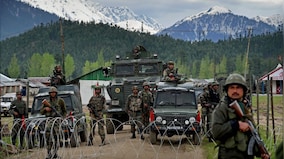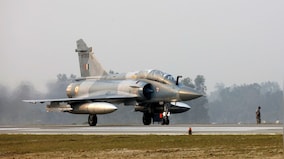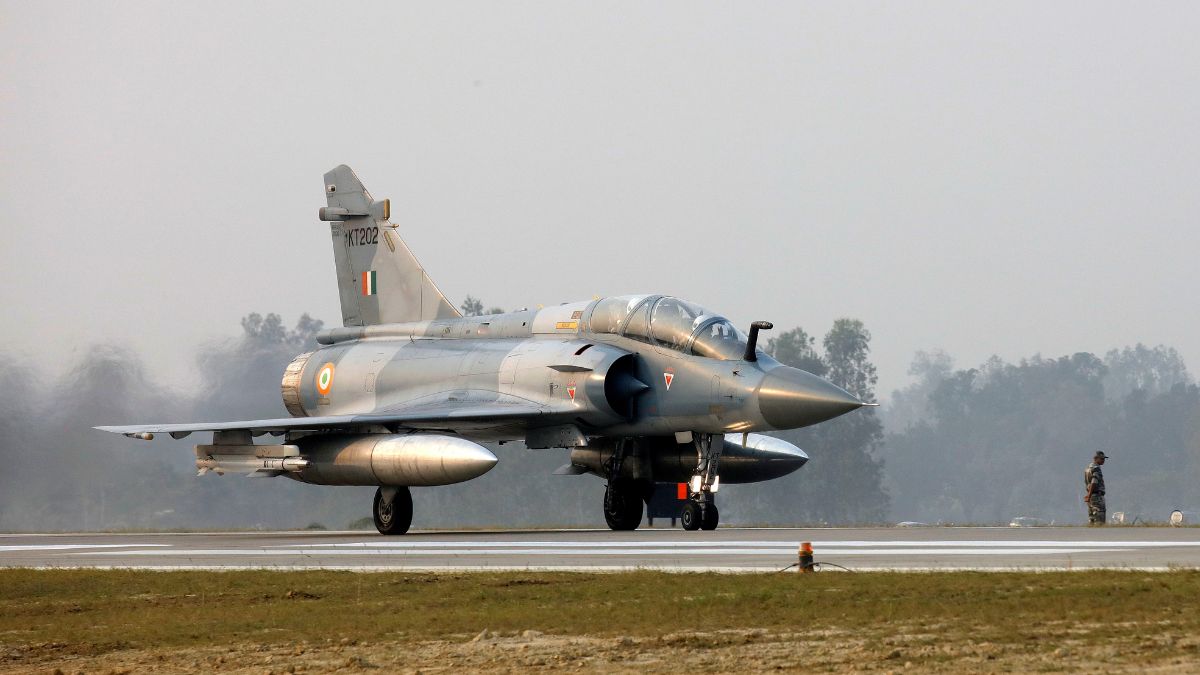India’s western borders saw a high-intensity military escalation between late Thursday evening and early Friday as Pakistani forces launched coordinated air strikes drone attacks, and artillery shelling across Jammu and Kashmir, Rajasthan and Punjab.
In a swift and calibrated response, India successfully neutralised all threats using its air defence systems, kinetic and non-kinetic capabilities and reportedly naval operations, while enforcing security measures including widespread blackouts in vulnerable regions.
There was also reported use of loitering munitions by Pakistan as well as air incursions across these states.
According to reports, the sequence of events began around 8:30 pm on Thursday when Pakistani forces initiated air and drone strikes targeting both civilian and military areas in Jammu and Kashmir, Punjab, Rajasthan, and Gujarat.
This came just a day after India had carried out targeted airstrikes under Operation Sindoor on terror camps situated in Pakistan and Pakistan-Occupied Kashmir (PoK) in response to the deadly Pahalgam terror attack that killed 26 civilians on April 22.
How Pakistani missiles and drones were neutralised
Pakistan’s offensive included heavy shelling along the Line of Control (LoC), airstrikes on Jammu, kamikaze drone deployments over Rajasthan’s Jaisalmer, and incursions near Sir Creek in Gujarat.
Critical military installations in Jammu, Pathankot and Udhampur were specifically targeted using Pakistani-origin drones and munitions.
“Military stations at Jammu, Pathankot and Udhampur were targeted by Pakistani-origin #drones and missiles along the International Border in J&K today,” said the Ministry of Defence in an official statement on X, formerly Twitter.
“The threats were swiftly neutralised using kinetic and non-kinetic capabilities in line with the established standard operating procedures (SOPs). No casualties or material losses were reported. India remains fully prepared to defend its sovereignty and ensure the safety of its people.”
Eight missiles were aimed at strategic locations in RS Pura, Arnia, Samba and Hiranagar in Jammu and Kashmir — all areas with significant military presence. Every one of these missiles was successfully intercepted by India’s advanced air defence systems.
Blackouts imposed in border areas
As missiles and drones lit up the skies, authorities imposed emergency blackouts in multiple border areas to reduce visibility for enemy aircraft and drones. Loud explosions rocked Jammu just before 9 pm, followed by the wail of sirens and a sudden blackout.
Local residents, shocked by the noise and sudden darkness, captured cellphone videos showing bright flashes and projectiles being intercepted mid-air by India’s defence systems.
The blackout extended beyond Jammu and Kashmir to areas in Punjab including Chandigarh, Ferozepur, Mohali and Gurdaspur.
In Rajasthan and Gujarat, precautionary blackouts were also ordered in select regions, especially where military infrastructure was located. Cellphone services went down in parts of Jammu, making communication difficult for many residents attempting to contact loved ones during the ongoing attack.
The Indian Premier League (IPL) match between Punjab Kings and Delhi Capitals, scheduled at Dharamshala’s HPCA Stadium, was also abruptly cancelled. The stadium was evacuated, and all lights were turned off as a precautionary measure.
Air Force and Navy join response, Pakistani F-16 shot down: Reports
As the threat escalated, Indian forces escalated their response. Post-midnight Friday, the Indian Navy reportedly began operations in the Arabian Sea, targeting Pakistani assets believed to be involved in the offensive.
Meanwhile, the Indian Air Force engaged an F-16 that had taken off from Pakistan’s Sargodha air base. Reports said the fighter jet was shot down by a surface-to-air missile deployed from Indian territory.
India’s earlier stance had been clear: any future attacks from Pakistan would be met with “action in the same domain and with the same intensity.” That posture was maintained following the Thursday night attack.
“The Indian Armed Forces reiterate their commitment to non-escalation, provided it is respected by the Pakistani military,” the Indian Ministry of Defence had said prior to the latest round of hostilities.
On the ground: Coordinated ceasefire violations and ground shelling
In tandem with the drone and missile attacks, Pakistani forces initiated multiple ceasefire violations along the LoC. Heavy shelling was reported from multiple sectors, particularly in Akhnoor, Samba, and the Jammu region. The Indian Army confirmed that it had responded forcefully to each of these violations.
“OPERATION SINDOOR. Pakistan Armed Forces launched multiple attacks using drones and other munitions along entire Western Border on the intervening night of 08 and 09 May 2025. Pak troops also resorted to numerous cease fire violations (CFVs) along the Line of Control in Jammu and Kashmir. The drone attacks were effectively repulsed and befitting reply was given to the CFVs. #IndianArmy remains committed to safeguarding the sovereignty and territorial integrity of the Nation. All nefarious designs will be responded with force,” the Indian Army stated on X.
OPERATION SINDOOR
— ADG PI - INDIAN ARMY (@adgpi) May 9, 2025
Pakistan Armed Forces launched multiple attacks using drones and other munitions along entire Western Border on the intervening night of 08 and 09 May 2025. Pak troops also resorted to numerous cease fire violations (CFVs) along the Line of Control in Jammu and… pic.twitter.com/WTdg1ahIZp
In support of this assertion, the Army released footage showing a Pakistani military post being destroyed in retaliatory strikes across the LoC. The exact location of the strike was not disclosed, in line with operational protocols.
Meanwhile, the Bureau of Civil Aviation Security (BCAS) ordered immediate upgrades to security protocols across all Indian airports. These included mandatory secondary security screenings, tighter access controls, complete CCTV surveillance, and random baggage inspections. Enhanced deployment of air marshals on domestic flights was also announced to prevent any airborne threats.
“India has negated Pakistan’s escalation bid with focused, measured and non-escalatory response,” the Information and Broadcasting Ministry had earlier stated on its official handle.
Officials have highlighted that all Indian actions — whether defensive interceptions or retaliatory missions — have been aligned with Standard Operating Procedures (SOPs) to avoid unnecessary civilian casualties and to uphold India’s commitment to non-aggression, unless provoked.
With inputs from agencies


)
)
)
)
)
)
)
)
)